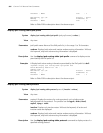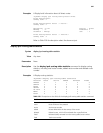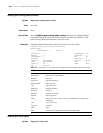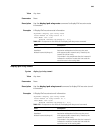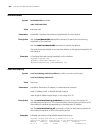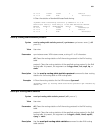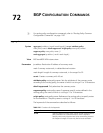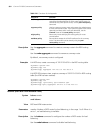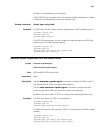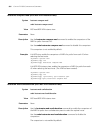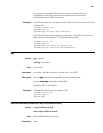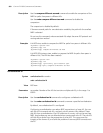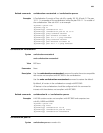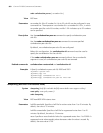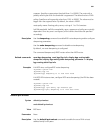
954 CHAPTER 72: BGP CONFIGURATION COMMANDS
Description Use the aggregate command to create a summary route in the BGP routing
table.
Use the
undo aggregate command to remove a summary route.
By default, no summary route is configured.
Examples # In BGP view, create a summary of 192.213.0.0/16 in the BGP routing table.
<Sysname> system-view
[Sysname] bgp 100
[Sysname-bgp] aggregate 192.213.0.0 255.255.0.0
# In BGP-VPN instance view, create a summary of 192.213.0.0/16 in BGP routing
table (the VPN has been created).
<Sysname> system-view
[Sysname] bgp 100
[Sysname-bgp] ipv4-family vpn-instance vpn1
[Sysname-bgp-vpn1] aggregate 192.213.0.0 255.255.0.0
balance (BGP/BGP-VPN instance view)
Syntax balance number
undo balance
View BGP view/VPN instance view
Parameters number: Number of BGP routes for load balancing, in the range 1 to 8. When it is
set to 1, no load balancing is available.
Description Use the
balance command to configure the number of BGP routes for load
balancing.
Use the
undo balance command to disable load balancing.
detail-suppressed This keyword does not suppress the summary route, but it
suppresses the advertisement of all the more specific routes. To
summarize only some specific routes, use the peer filter-policy
command.
suppress-policy Used to create a summary route and suppress the advertisement
of some summarized routes. If you want to suppress some routes
selectively and leave other routes still advertised, use the
if-match clause of the route-policy command.
origin-policy Selects only routes satisfying the routing policy for route
summarization
attribute-policy Sets attributes except the AS-PATH attribute for the summary
route. The same work can be done by using the peer
route-policy command.
Table 214 Functions of the keywords
Keywords Function



